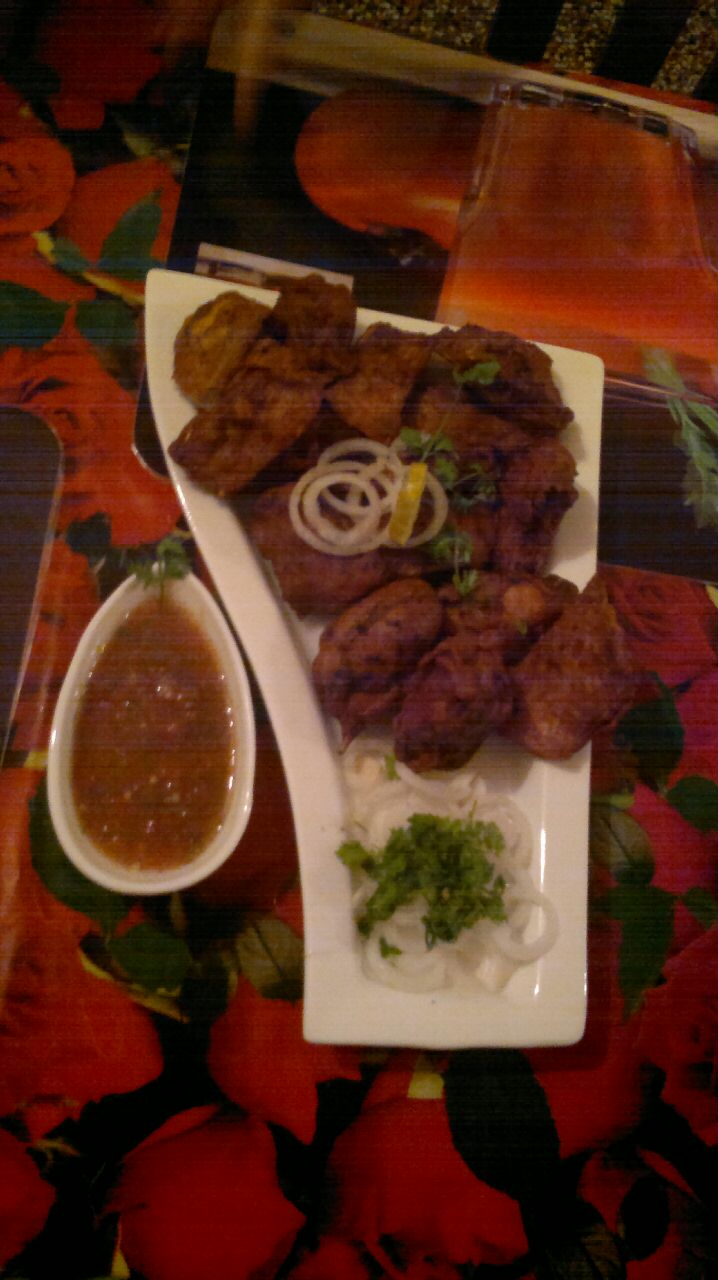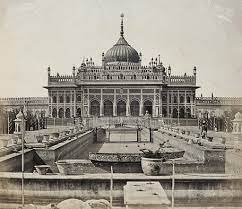|
Awadhi
Awadhi may refer to: * Something of, from, or related to the Awadh or Oudh region in Uttar Pradesh, northern India ** Awadhi people, ethnic group of India *** Awadhi language Awadhi, also known as Audhi, is an Indo-Aryan language belonging to the Indo-Iranian subdivision of the Indo-European languages. It is spoken in the Awadh region of Uttar Pradesh in northern India and in Terai region of western Nepal. The n ..., their Indo-Aryan language ** Awadhi cuisine, part of Indian cuisine ** Awadhi architecture See also * AUDH (other) * Didier Awadi (born 1969), Senegalese rapper * Awhadi Maraghai (1274/75–1338), Persian Sufi poet {{disambiguation Language and nationality disambiguation pages ... [...More Info...] [...Related Items...] OR: [Wikipedia] [Google] [Baidu] |
Awadhi Language
Awadhi, also known as Audhi, is an Indo-Aryan language belonging to the Indo-Iranian subdivision of the Indo-European languages. It is spoken in the Awadh region of Uttar Pradesh in northern India and in Terai region of western Nepal. The name ''Awadh'' is connected to Ayodhya, the ancient city, which is regarded as the homeland of the Hindu deity Rama, the earthly avatar of Vishnu. Awadhi is also widely spoken by the diaspora of Indians descended from those who left as indentured labourers during the colonial era. Along with Braj, it was used widely as a literary vehicle before being displaced by Hindi in the 19th century. Though distinct from standard Hindi, it continues to be spoken today in its unique form in many districts of central and east Uttar Pradesh. The Indian government considers Awadhi to be a greater mother-tongue grouped under Eastern Hindi languages. Standard Hindi serves as the lingua franca of the region; Hindi, rather than Awadhi, is used for school i ... [...More Info...] [...Related Items...] OR: [Wikipedia] [Google] [Baidu] |
Awadhi Cuisine
Awadhi cuisine (, ) is a cuisine native to the Awadh region in Northern India and Southern Nepal. Awadhi cuisine can be divided in two parts; Traditional Awadhi cuisines and Nawabi cuisines. Cooking patterns of Lucknow are similar to those of Central Asia, the Middle East, and Northern India and Western India with the cuisine comprising both vegetarian and non-vegetarian dishes. The Awadh region has been influenced by Mughal cooking techniques, and the cuisine of Lucknow which bears similarities to those of Central Asia, Kashmir, Punjab and Hyderabad. The city is also known for its Nawabi foods. Nawabi Cuisine The ''bawarchis'' (chefs) and ''rakabdars'' (gourmet cooks) of Awadh invented the dum style of cooking or the art of cooking over a slow fire, which has become synonymous with Lucknow today. Their spreads consisted of elaborate dishes such as kebabs, kormas, biryanis, kaliyas, nahari-kulchas, zarda, sheermal, rumali rotis, and warqi parathas. The richness of Awad ... [...More Info...] [...Related Items...] OR: [Wikipedia] [Google] [Baidu] |
Awadhi People
The Awadhi people or Awadhis (Devanagari: अवधी, Kaithi: 𑂃𑂫𑂡𑂲, Perso-Arabic: ) are an Indo-Aryan ethno-linguistic group who speak the Awadhi language and reside in the Awadh region of Uttar Pradesh. Many Awadhis also migrated to Madhya Pradesh, Bihar, Jharkhand, Gujarat, Maharashtra, Odisha in India and some adjoining regions of the Terai in Nepal, and in addition 3 per cent of Nepalis are Awadhi speakers. Awadhi people can be found throughout the world, most notably in Fiji, Guyana, Mauritius, South Africa, Suriname, Trinidad and Tobago, the United States, the United Kingdom, Canada, the Netherlands, Australia, and New Zealand. Historically, Indo-Aryans dominated the North Indian Gangetic Planes; thus, the Awadhi language continuously evolved over the centuries in the Awadh region of Uttar Pradesh. Language The Awadhi language is spoken by about 55 million people. In India, native speakers are estimated to be 65 million, while in Nepal native speakers ... [...More Info...] [...Related Items...] OR: [Wikipedia] [Google] [Baidu] |
Awadh
Awadh (), known in British Raj historical texts as Avadh or Oudh, is a historical region in northern India and southern Nepal, now constituting the North-central portion of Uttar Pradesh. It is roughly synonymous with the ancient Kosala Region of Hindu scriptures, Hindu, Buddhist scriptures, Buddhist, and Jain scriptures. It was a province of all the major Muslim period in the Indian subcontinent, Islamic dynasties in India including the Mughal Empire. With the decline of late Mughal Delhi, Awadh became a major source of literary, artistic, religious, and architectural patronage in northern India under the rule of its eleven rulers, called Nawab of Awadh, Nawabs. From 1720 to 1856, the nawabs presided over Awadh, with Ayodhya and Faizabad serving as the region's initial capitals. Later, the capital was relocated to Lucknow, which is now the capital of Uttar Pradesh. The British conquered Awadh in 1856, which infuriated Indians and was recognised as a factor causing the Indian ... [...More Info...] [...Related Items...] OR: [Wikipedia] [Google] [Baidu] |
Awadhi Architecture
The Lucknow School of Architecture was an experiment by the resurgent Nawabs of Awadh. It was an attempt to preserve the Mughal school of architecture by experimenting with different materials and innovating new concepts. Among the extant architecture there are religious buildings such as ''imambaras'', mosques and other Islamic shrines, and secular structures like enclosed gardens, ''baradaris'', palace complexes. The following are distinct features of Lucknow architecture : *Use of Fish as an auspicious and decorative motif especially on Gates * The use of Chattar (umbrella) as in the Chattar Manzil * The Baradari (the twelve doorway pavilions) * Rumi Darwaza, the signature structure of Lucknow * Enclosed Baghs like Sikandar Bagh * Vaulted halls such as the Asafi Imambara * The labyrinth (Bhulbhulaiyan) * Taikhanas * Use of lakhauri bricks Lucknow’s geography also plays a major role in determining the type of structures built. Lucknow is based on fertile land, and t ... [...More Info...] [...Related Items...] OR: [Wikipedia] [Google] [Baidu] |
AUDH (other)
Audh may refer to: * AUDH, an abbreviation for the chemical ( Aldos-2-ulose dehydratase) * Awadh Awadh (), known in British Raj historical texts as Avadh or Oudh, is a historical region in northern India and southern Nepal, now constituting the North-central portion of Uttar Pradesh. It is roughly synonymous with the ancient Kosala Regio ... or Audh, a princely state of Northern India See also * Awadhi (other) {{Disambiguation ... [...More Info...] [...Related Items...] OR: [Wikipedia] [Google] [Baidu] |
Didier Awadi
Didier Awadi is a Senegalese rapper and a significant figure in Francophone West African hip hop. As a founding member of Positive Black Soul (PBS) with Duggy Tee, Awadi toured around the world contributing to the international popularity of Hip Hop Galsen. Awadi works as a solo artist, accompanied by his crew PBS Radikal. He participates in the Senegalese music industry through his label, recording studio, and rehearsal space, Studio Sankara. Awadi offers a conscious and revolutionary style of music strengthened by articulated and rooted messages. His motivation and inspiration is grounded in the Burkinabé revolutionary Thomas Sankara's phrase: ''"Let's dare to invent our future!"'' Biography Born on August 11, 1969, in Dakar, Senegal, Awadi is of Beninese and Cape Verdean descent. In 1984, while hip hop was slowly emerging on the Dakar scene, Awadi created the group Syndikat. In 1989, he formed Positive Black Soul with fellow hip hop musician Duggy Tee with the desire of pr ... [...More Info...] [...Related Items...] OR: [Wikipedia] [Google] [Baidu] |
Awhadi Maraghai
Awhadi Maraghei (also spelled Auhadi; ) (1274/75–1338) was a Persian Sufi poet primarily based in Azerbaijan during the rule of the Mongol Ilkhanate. He is usually surnamed "Maraghai", but also mentioned as Awhadi Esfahani because his father hailed from Isfahan and he himself spent part of his life there. He first chose the pen-name Safi, but changed it to Awhadi after becoming a devotee of the school of the famous mystic Awhad al-Din Kermani. Life His full name was Awhad al-Din (or Rukn al-Din) ibn Husayn Isfahani. According to a verse in his ''Mathnawi-yi Jam-i jam'', Awhadi was born in the city of Isfahan in . He most likely lived there until his later teens. At the start of the 1290s, Awhadi went on a long trip, visiting various places, such as Basra, Baghdad, Damascus, Sultaniyya, Karbala, Kufa, Najaf, Qum and Hamadan. He also briefly lived in Mecca. In , Awhadi permanently settled in Maragha, but would also regularly visit Tabriz to the north, which was a day's ... [...More Info...] [...Related Items...] OR: [Wikipedia] [Google] [Baidu] |



